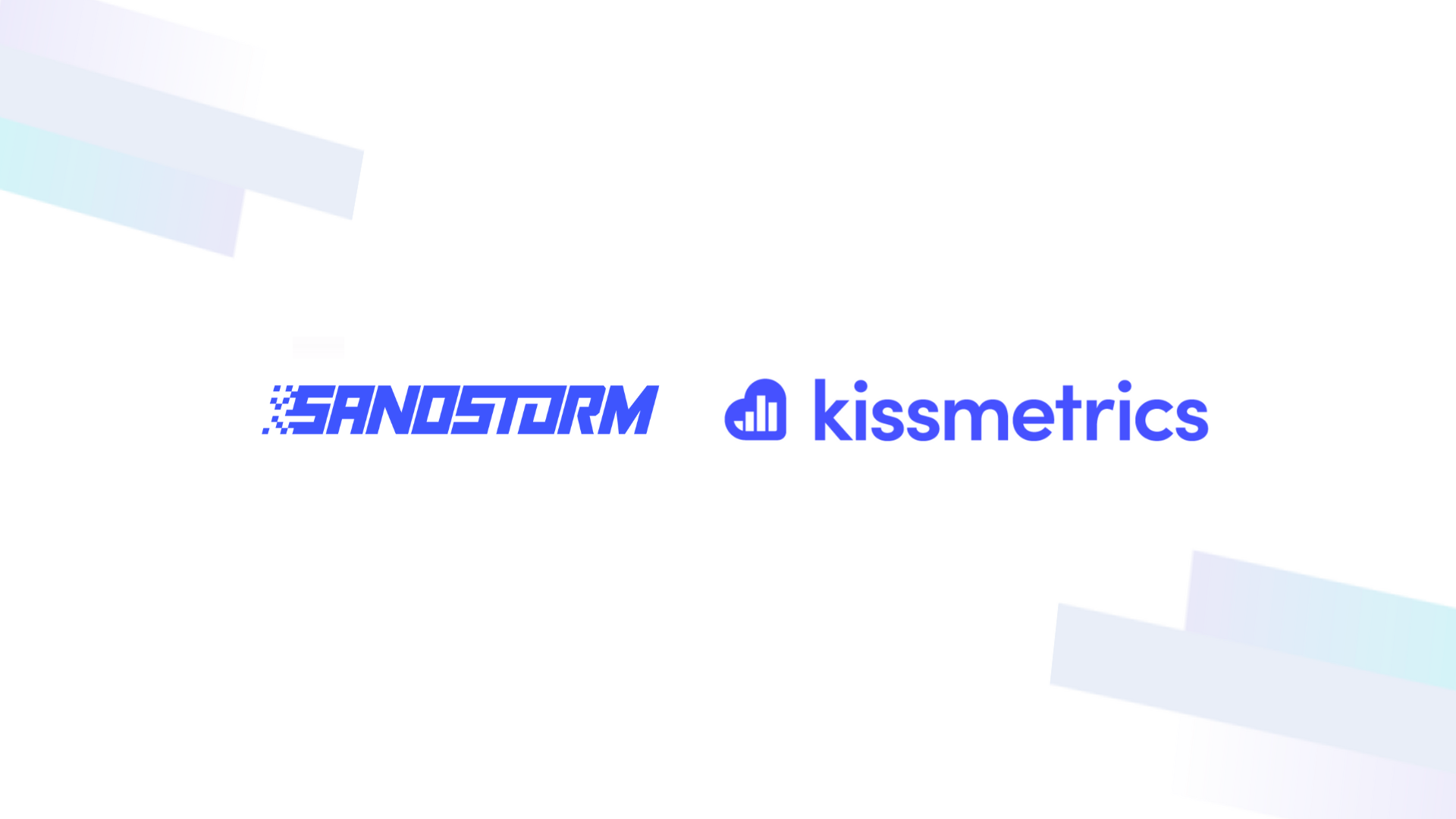User Analytics Overview

As the name implies, user analytics is the process of evaluating your user’s actions, so your company can provide services or make products that your customers enjoy. The insights offered by user analytics software can help you do that by showing you features of your product, service, or sales platform work well (i.e. users use them regularly) and which give users problems or go unused altogether. This will help you decide which bugs to fix and what to build next and to prioritize that list. .
Learn how user analytics work, what kinds of information it provides, and what to do with that data once you have it.
What are User Analytics?
User analytics is the process of collecting and analyzing data on actions users take within a product. Using an analytics tool like Kissmetrics allows you to take this data and create a comprehensive user profile that can be combined with the information the user provides for a holistic view of the people and companies who use your product.
User analytics differ from self-reported surveys because there is no potential for deceit. You’re tracking what they actually do, not what they say they do.
How do You Perform User Analytics?
You start by installing a user analytics tool in your product and choosing the events (i.e. user actions) you want to track. The events you track should answer key questions that indicate your product’s success.
For example, are they regularly logging in? Which features are they using? Which features seem to cause them problems?
Choose the Right Events for Your Business
In order to gain the insights that will allow you to pull the right levers to grow your business, you have to track events that are indicative of user success (or failure) within your product. If you don’t know what these are, create a hypothesis about which user actions are most important, then test it. You may change the events you track over time as you collect more data and gain greater insight.
Break it into Sub-events
Once you have defined the events you’re interested in tracking, you need to break them down to understand user motivations and what the user needs to do to get there.
For example, product managers can employ user analytics to monitor which features their power users seem to gravitate towards, and which features casual users seem to prefer. Inversely, user analytics can help product managers determine which features are not commonly used or understood by their user base; they can even determine which groups of users are the most likely to cancel their subscription or discontinue service.
Watch Users Conducting Events
As the name implies, this step requires your team to observe the process. They will have certain concepts in mind during their observation like:
- The motivation behind each subevent.
- Information required by the user to complete the subevent.
- If the user can tell when they’ve achieved their results.
- If the user needs specific tools not included on the website or app to complete the task.
Draw an Event Diagram
An event diagram is a flowchart where your team documents the entire user process from beginning to end. This should include all subevents and how the funnel connects and creates the ultimate event.
Write the Story
The story documents user motivations or the “why”. Writing the story entails the team figuring out what motivated the customer to proceed through each subevent and how those motivations and emotions tie into the ultimate event.
Validate Your Findings
At this point, your team should run their event diagram past others who aren’t familiar with the process. The fresh set of eyes may find some subevents that should be separated and called out or ones that ought to be bundled together.
Analyze Your Results
This is where the fun starts. Your company has collected in-depth information about an event or process, but sometimes customers don’t behave how you predicted.
Where in the event did people do something unexpected? What could have caused that deviation?
How do I Evaluate My User Analytics Platform
The best user analytics platforms are the ones that store lots of data points about users to compile a comprehensive profile. However, platforms need to do more than just store data. They need to showcase said data in a way that makes it easy to see who your customers are, their retention rate, how well marketing performed in various places, and the actions taken by users in your product.
To evaluate your user analytics platform, it is essential to take the following into account.
Integrations
Knowing which software is compatible with a proposed user analytics platform is crucial. Transferring data between different programs is time-consuming and costly. Having a platform that will efficiently work with the software your company already has in place, will save you a lot of energy and expense.
Automation
Great user analytics platforms do the work for you and give that time back to your teams for other work. The best types of software make your team more productive by automating certain manual tasks that save your team time and energy.
Scale
Another consideration is the current size of your company now, how many events you want to track, how many users will need access to the tool and your projections for the future. It can be a waste of resources to install a user analytics platform that only works for your current operations but may become obsolete as your business expands.
Optimization
Some user analytics tools are made for individuals or small team use instead of larger project teams. So think about who is using the tool and whether or not it’s the right fit.. Individual use software might have more tempting integrations or fancy features, but if it isn’t optimized for team use, it will probably end up being more trouble than it’s worth.
Accessibility
Ideally, your user analytics platform is intuitive and doesn’t take a lot of training to use. You want your teams to begin using the information as soon as possible, so choosing a platform with a steep learning curve that requires hours of onboarding might not be the best way to go.
Why are User Analytics Important for Your Business?
User analytics provide deeper insight into what your customers are doing, how they’re engaging with your product, and how making changes based on that information could affect your churn rate. You can also segment customers into cohorts and break down your user base into users, power users and unhealthy accounts (i.e. those who haven’t used the product in a while and are at risk of cancelling).
This will allow you to target your marketing to attract more people likely to become power users, and it presents a customer service opportunity to save accounts that might otherwise churn. It also shows you which features are most popular with your power users so you can strategize how to direct other users to said popular features. And then hopefully turn “regular” or “unhealthy” users into power users.
Additionally, user analytics can reveal where in the funnel users are most likely to drop off and stop using your product. This could be especially good if you weren’t aware of your product’s weaknesses before.
Understand User Behavior
Knowing why customers and users behave the way they do is the key to growing your business successfully. If users only engage with a handful of features and the rest don’t get much play, you can better prioritize your resources to supporting the more profitable segments of your business.
Understand User Demographics
Grouping customers into cohorts based on demographics like age, gender, or location can be a handy way to identify your company’s target audience and do more to appeal to them.
Alternatively, by identifying traits that make customers less likely to stick with your company, you might be able to take steps to broaden your product or service’s appeal.
Increase Profitable Product Decisions
One of the most critical insights user analytics can glean is exactly what makes you money. Then you can choose to build more of that or make those profitable features even better. You’ll receive data about how customers respond to changes in your products or services which can inform your company about which decisions were the right ones. And make more of those in the future.
Empower Your Teams
Product managers and marketers may have plenty of experience on the job, but no one is infallible. With everything going on inside a supposedly simple application, it can be difficult to monitor where the problems are coming from and address customer concerns. With user analytics, you don’t have to worry that your teams only see what they want to see.
Interviews and surveys with users are unlikely to yield the best information because users may forget individual steps or only focus on saying what they think is expected of them. Instead, user analytics gives your teams relevant information about real user experiences that can shape and inform your company’s steps moving forward.
Conclusion
User analytics works by connecting multiple data points on your users to form holistic profiles. These profiles give you insights about user cohorts and the processes that users undertake when interacting with your product. With a product analytics tool like Kissmetrics, you’re able to understand your user habits on a granular level.
By understanding actual user behavior and experience, your company can grow and expand in a way that customers will love.
Sources:
What are User Analytics? | Pendo
User task analysis to better understand your customers | Mixpanel


